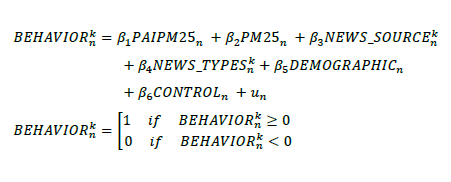The Precautionary Behavior Against PM2.5 Exposure
Keywords:
Environmental health behavior, Precaution Adoption Process Model (PAPM), PM2.5 exposure, Precautionary Principles (PP), Protection Motivation Theory (PMT)Abstract
This article presents an integrated theoretical framework combining Protection Motivation Theory (PMT), Precautionary Principles (PP), and Precaution Adoption Process Model (PAPM) to analyze precautionary behavior in response to PM2.5 exposure. The framework examines how various information channels influence decision-making processes, from awareness to action, through cognitive assessments and stages of precaution adoption behaviors. By incorporating a public attention index based on internet searches, the framework links individual-level processes and population-level indicators of concern regarding PM2.5 issues. This integration offers insights for environmental health research and risk communication, informing targeted strategies to promote protective behaviors against air pollution and other environmental threats. The framework suggests that effective interventions should be tailored to different stages of awareness and decision-making, considering various information sources and their impacts. Potential applications include enhancing risk communication strategies, targeting specific demographic groups, and addressing barriers to the adoption of protective behaviors.

